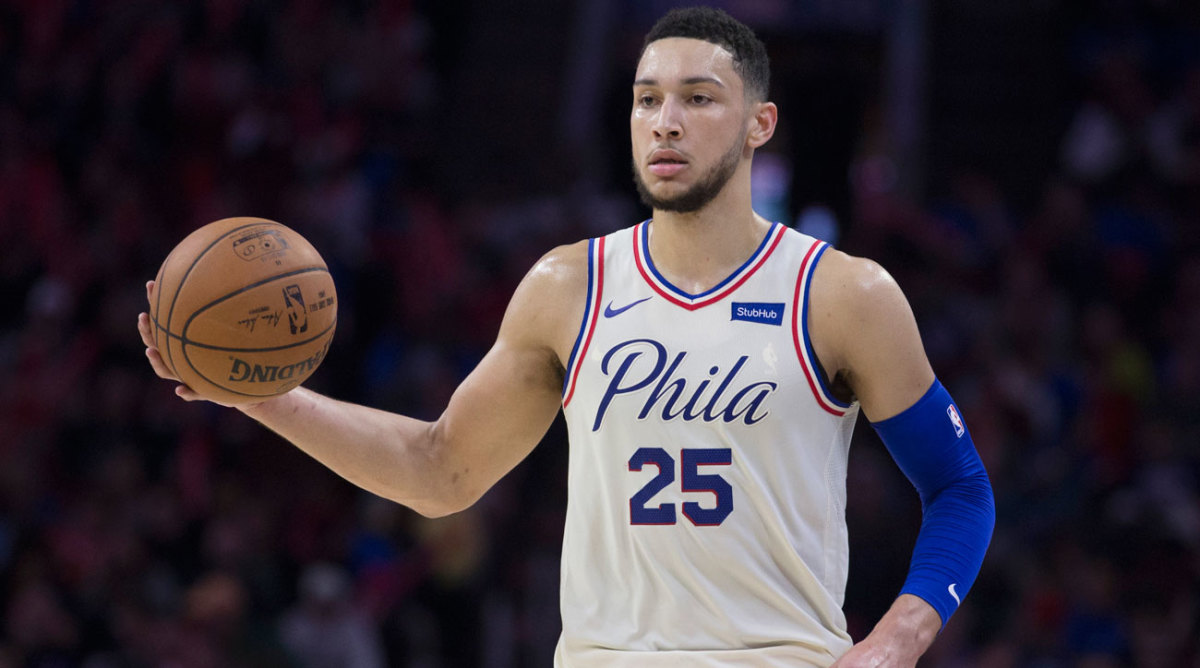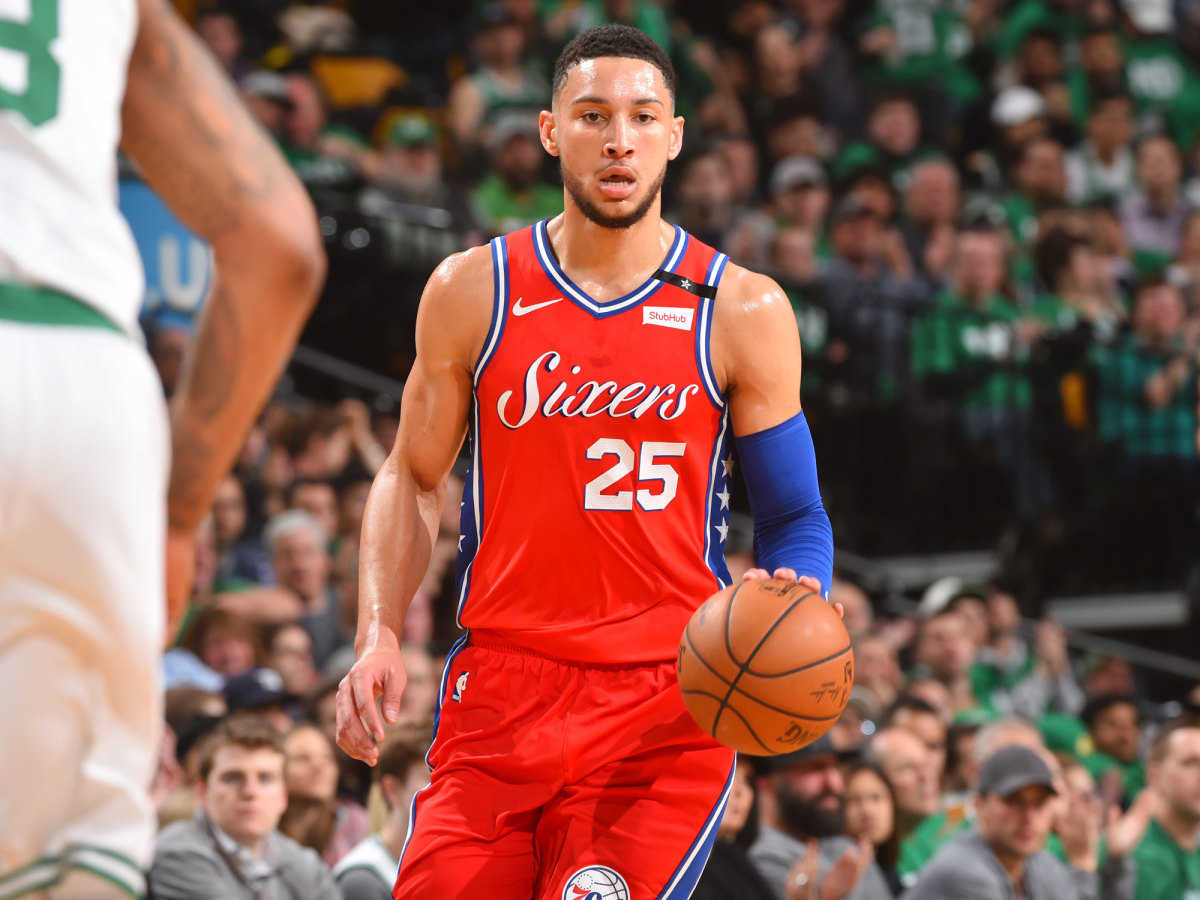Ben Simmons and the Benefits of a Redshirt Year

The deadline for media members to submit their final NBA Rookie of the Year ballots passed long ago and yet the debate rages on like a maelstrom. Everyone’s got a horse in the race: USA Today and Sports Illustrated stumped for Philadelphia’s Ben Simmons and Richard Jefferson adamantly argued for Utah’s Donovan Mitchell; Boston’s Jayson Tatum would vote for himself.
All three men have had terrific seasons, but the debate, if there really is one, has hinged on one question: is Ben Simmons truly a rookie? While Tatum and Mitchell were both drafted in the first round of the 2017 NBA draft, Simmons was selected first overall in 2016. But he never played a game for the Sixers after he suffered a foot injury on the last day of training camp, which means that his 2017 debut was his first game as an NBA player. Simmons spent the 2016 season recuperating, but did that so-called redshirt season provide him a leg up on his fellow first-years? And if it did, does that mean Simmons is not a “true rookie,” as Jefferson said? Should he even be considered for the Rookie of the Year award? To answer these questions and more, we turned to Brandon Payne, founder and owner of Accelerate Training in Fort Mill, S.C., who helped mold Stephen Curry—among others—into one of the best basketball players in the world.
NBA Free Agency 2018: Top 50 Players Available
Like Curry, Payne made a name for himself in the Carolinas. When Curry couldn’t access the training facilities in Golden State during the 2011 NBA lockout, he headed back to the Tar Heel state to rehab and train. There, another player linked him up with Payne, and they’ve been together ever since.
"Stephen is the guy who really embodied everything about the type of training that I wanted to put into play at the NBA level,” Payne says. “What I do is all about creating a level playing field, meaning it was, initially, about taking a guy who didn't have the most physical gifts and giving them the ability to compete with and beat players that are physically gifted. Since then, players that do have a lot of natural ability have taken what I do and they've really exploded with it."
In addition to the customary training of stamina, strength and skill, Payne tailors his training to each individual client. Accelerate zeroes in on the mental, neurological side of training specifically, and Payne requires that his trainers and trainees alike buy in.
"It's all about efficiency, and it's all about being able to give players reasons why we do things,” he says. “If we can't explain a drill or a concept from the toes to the brain, then we shouldn't be doing it. If we can't tell a player what’s going on, if we can't look past the drill, past the action that we're working on, past the life, then we're not doing our job. It's really about training the entire player, not just a specific portion of a player.”

Payne hasn’t trained Ben Simmons personally, but there’s not even a debate in his mind: the Philadelphia point guard should absolutely be considered a rookie since he appeared in zero NBA games before this season. Those are the rules, after all. But did being in the NBA for a full year give Simmons any advantages that someone like Mitchell didn’t get? Again, Payne is unequivocal. He says simply being around other professionals, coaches and players, having access to professional nutritionists and trainers, and the opportunity to acclimate to a new city for a whole year, even while recovering from injury, is very advantageous to a young player.
"You've got to remember, some of these kids are 19. This is a grown man's league,” Payne says. “To have NBA strength and conditioning, NBA player development, NBA coaches, learning terminology, learning the NBA game, that’s huge, because it's a very different game than college basketball. You can get a lot out of NBA practices. NBA practices are, quite honestly, a lot of people would pay to watch those practices—they can get pretty competitive, they can get pretty good, especially early in the season.”
And Payne says all those extra practices helped Simmons look more “polished” than the rest of the members of his first-year class from the get-go. Simmons had a year to focus on basketball and getting healthy that Mitchell and Tatum didn’t have as college players, Payne says. Now that they’re all in the NBA, they can focus on the sport as much as they choose, but Simmons has had that additional year to adjust to life as a professional.
“Let's face it: these high draft picks have an enormous amount of pressure on them from day one,” Payne says. “They need people to help them ease that pressure a little bit to allow them to learn and define their role in the NBA, what they do well, what they don't do well, to see veterans in there working hard at their craft, and understand what it takes not only to be a good player in the NBA today, but a good player and few years down the road. You need people to help show you the way, whether it be coaches, teammates, a trainer or somebody in the front office, you need people to be in your corner and help you out because it is a difficult landscape to navigate. There are more challenges on the path to success when you don't have that community.”

The post-redshirt success that Simmons has experienced isn’t exactly a new development; the same thing happened with Blake Griffin and the Clippers less than a decade ago. Los Angeles drafted Griffin No. 1 overall in 2009 out of Oklahoma, but he missed all of his first season with a stress fracture in his left knee. Griffin finally made his debut in 2010-11 and dominated, winning Rookie of the Year and kicking off a stretch of five straight All-Star seasons. And the Sixers know a thing or two about delayed gratification as well: before Simmons’s saga, Philadelphia waited two years to see the debut of Joel Embiid, who created a Rookie of the Year campaign of his own last season before losing out to Malcolm Brogdon. That makes three examples of success after a “redshirt” season in just the last decade, and Payne says he wouldn’t be surprised if more teams hand out “redshirts” in the future.
"I think it's something to consider, especially if you're a couple of years away from being competitive anyway," Paine says. "Rather than rush a kid out there and have their confidence beat up, or put them in a situation where they don't have a high likelihood of success, I think it's better to essentially spend a year developing them, not only as players, but as young men that can operate in the NBA lifestyle and navigate it successfully. It wouldn't be a horrible idea to look at that in some organizations."

Still, with all the discussion of the merits of tanking, trusting “The Process” and so on, it’s hard to imagine most owners, in the NBA or otherwise, would easily get behind the idea of throwing away a season while a prospective star takes a year (or two, in Embiid’s case) to recuperate. Most coaches and executives might not either, and why would they? Coaches generally only get a few years to make an impact, and if the team isn’t expected to be competitive in those years, how much can a coach do? The Clippers went 19-63 in the year before Griffin was drafted, and head coach Mike Dunleavy was fired 49 games into the year that Griffin spent on the sidelines. Dunleavy didn’t get to benefit from Griffin’s presence.
"There's certainly a front office and a coaching risk when you take somebody and then don't play them the first year. A lot of owners don't understand the term 'next year' very well,” Payne says with a laugh. “So it's not only that player's job that's at stake, you've got front office people, trainers and coaches, their jobs are at stake, too. To take a big risk by not playing somebody and then bank on the fact that, hey, this is going to play out for us in the future, sometimes that's tough to explain to some very bottom-line-type people."
2018 NBA Draft: Biggest Winners and Losers
It’s clear that Simmons benefited from his NBA gap year. He’s said so himself: “Compared to last year, I’m a much better player. It’s not even close.” But should all that extra practice, extra training, extra coaching, extra time exclude him from this year’s Rookie of the Year race? And if he could, would Payne vote for Simmons for Rookie of the Year? Payne says yes, but with a little hesitation.
“I tend to put a lot of weight on winning, and that's not to say that Donovan Mitchell didn't, but just the change in number of wins, to me, that leans me towards Simmons. Those other guys have had great, great, rookie years, though, they really have. I mean, if I could give it to two guys, if I could say there's a tie, without a doubt it's Simmons and Mitchell."
A tie is, for better or worse, a highly unlikely scenario. And no one, not even the players themselves, can do anything else to sway the Rookie of the Year Award race in one direction or another. But until the winner receives that trophy on that stage in Santa Monica, Calif., on June 25, you’d better believe there’ll be loads more opinions, analysis, and plenty of smack talk.
